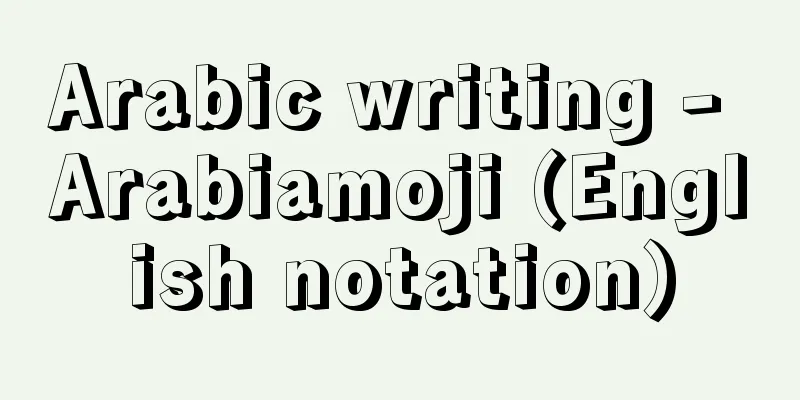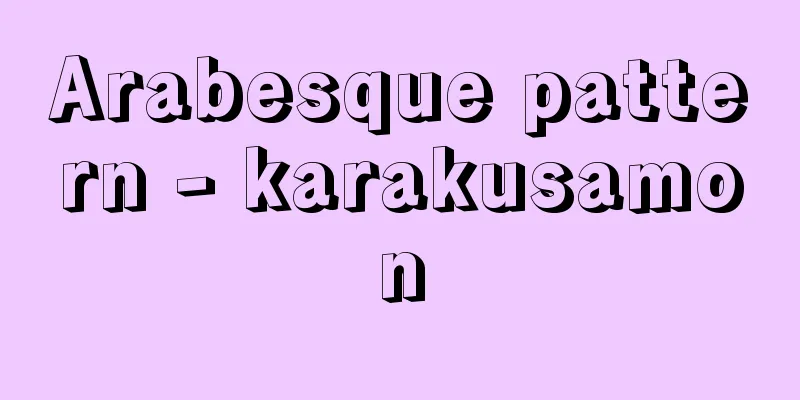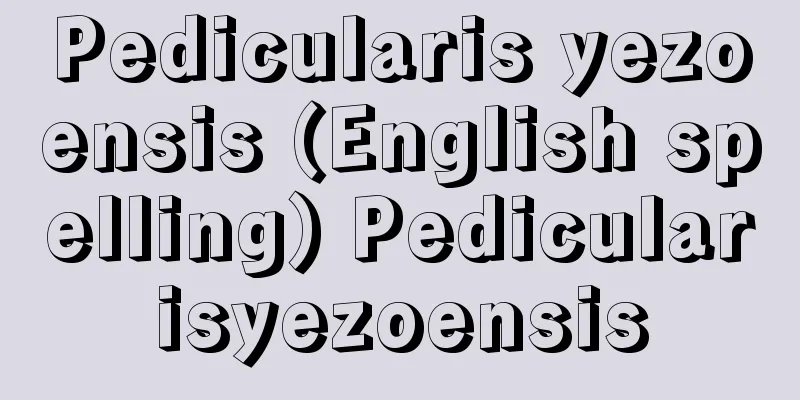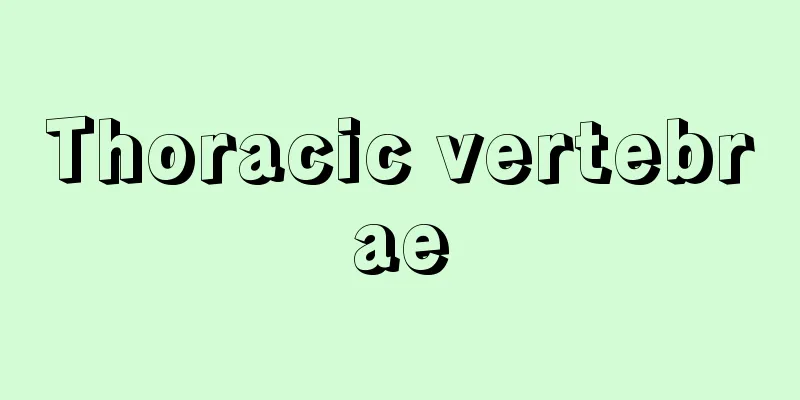Arabic writing - Arabiamoji (English notation)

|
The script used to write Arabic and other languages in a wide area, mainly in the Middle East, stretching from North Africa to Pakistan. It is sometimes called the North Arabian script to distinguish it from the South Arabian script, which is a different system. [Yoichi Tsuge] systemThe alphabet has 28 letters representing consonants, and long vowels are written using alif, yā', and wāw. There are no letters to represent short vowels, and auxiliary symbols are used when necessary, but this is limited to the Holy Quran, where misreading is not permitted, and reading materials for beginners. It is written from right to left, and is divided into words. Each letter is written consecutively, but the same letter changes shape slightly depending on its position at the beginning, middle, or end of the word. Punctuation marks are now almost the same as those in European languages, but question marks and other marks are written in the opposite direction due to the writing direction. There is no distinction between uppercase and lowercase letters. [Yoichi Tsuge] historyIt originated from the Aramaic Nabataean script and was created in the northern Arabian Peninsula several centuries after Christ. Six letters were added to the 22 letters of the Nabataean script to represent the Arabic sounds , , , , , and cursive writing was also promoted. The oldest document, excluding an inscription from the early 4th century, is a Christian inscription (512) discovered in Zabad, Syria. A large number of documents date back to the post-Islamic period, and there are abundant documents that remain to this day. The short vowel symbols were devised around the 7th or 8th century, following the Syriac system. [Yoichi Tsuge] developmentWith the rise of Islam, Arabic, the language and writing of the Quran, and the Arabic script spread throughout the Iberian Peninsula, Africa, and Asia. As a result, languages in various regions began to use the Arabic script and to be written with appropriate modifications. Examples of this include Swahili, Hausa, and Berber languages in Africa, and Turkish, Malay, Urdu, Pashto, and Persian in Asia. However, among the above languages, Swahili, Hausa, Turkish, and Malay have now switched to the Roman alphabet. [Yoichi Tsuge] FontThe earliest style of calligraphy was the angular Kufic, followed by the rounded Naskhi. Later, Naskhi became predominant, with Kufic mainly used for decoration. In North Africa, Maghribi, which can be considered an intermediate style between these two, was born. In the Eastern Islamic world, several styles developed from Naskhi, including Ruq'a (now the common handwriting style developed in Turkey) and Nastaliq (used for Persian, etc.). Beautiful calligraphy was an object of reverence, and, coupled with the teachings of anti-idolatry, it was often used to decorate buildings, competing for beauty. [Yoichi Tsuge] [References] |©Shogakukan Library "> Arabic script ©Shogakukan Library "> Arabic consonant alphabet Source: Shogakukan Encyclopedia Nipponica About Encyclopedia Nipponica Information | Legend |
|
中東一帯を中心として、北アフリカからパキスタンに及ぶ広い地域で、アラビア語その他の言語の表記に使われている文字。別系統の南アラビア文字とはっきり区別するために、北アラビア文字ということもある。 [柘植洋一] 体系アルファベットで、字母数は子音を表す28文字であり、長母音はそのうちのalif, yā', wāwを用いて書かれる。短母音を表す文字はなく、必要な場合は補助記号で示すが、これは読み間違いの許されない聖典コーランや、初学者向けの読み物に限られる。書く方向は右から左で、ほぼ単語を単位に、分かち書きされる。そのなかで各文字は続け書きされるが、語頭、中、末といった位置により、同じ文字でも多少字形を変える。句読点は、現在ではほぼヨーロッパ語の場合と同様だが、書写方向の関係で疑問符などは向きが逆になる。なお、大文字、小文字の区別はない。 [柘植洋一] 歴史アラム系のナバタイ文字に由来し、紀元後数世紀の間に、アラビア半島北部でつくられた。ナバタイ文字22文字に、アラビア語固有の音, , , , , を表すための6文字が追加され、続け書きもいっそう推進された。最古の資料は4世紀初頭の刻文を除けば、シリアのザバドで発見されたキリスト教徒碑文(512)である。まとまったものはイスラム以後で、現在に至る豊富な資料を残す。短母音記号はシリア語の方式に倣って7、8世紀ごろに考案された。 [柘植洋一] 発展イスラムの勃興(ぼっこう)に伴い、コーランの言語、文字であるアラビア語、アラビア文字は、イベリア半島、アフリカ、アジアに広がった。その結果、各地の言語がアラビア文字を用い、それに適宜改変を加えて書かれるようになった。アフリカのスワヒリ語、ハウサ語、ベルベル語など、アジアのトルコ語、マレー語、ウルドゥー語、パシュトー語、ペルシア語などがそうである。ただし現在では、上記言語中、スワヒリ語、ハウサ語、トルコ語、マレー語は、ローマ字にかわっている。 [柘植洋一] 書体最初期の書体は角張ったクーフィー体で、丸味を帯びたナスヒー体がこれに続く。のちにはナスヒー体が優勢となり、クーフィー体はおもに装飾用となった。北アフリカではこれらの中間的な書体ともいえるマグリビー体が生まれた。東イスラム世界ではナスヒー体から、ルクア体(現在普通の手書き体で、トルコで発達)やナスタリーク体(ペルシア語などに用いられる)などいくつかの書体が発達した。美しい書は敬愛の対象となり、また偶像排斥の教えとも相まって、建築物の装飾にも多用され美を競っている。 [柘植洋一] [参照項目] |©小学館ライブラリー"> アラビア文字のおもな書体 ©小学館ライブラリー"> アラビア文字の子音アルファベット 出典 小学館 日本大百科全書(ニッポニカ)日本大百科全書(ニッポニカ)について 情報 | 凡例 |
<<: Arabi Movement - Arabi Movement
>>: Arabian Peninsula - Arabiahanto (English spelling)
Recommend
Nama
...They once lived in large numbers in South Afri...
Branch Coral Jewel
...His greatest achievement was perfecting the Sh...
Schweizerische Eidgenossenschaft (English notation) Schweizerische Eidgenossenschaft
...Official name: Swiss Confederation Schweizeris...
Ibotsunomata - Warts
...The body with the former is called a sporophyt...
Ramp
…When expressways intersect or connect with each ...
Meghadūta (English spelling)
An Indian Sanskrit lyric poem. The Japanese transl...
Shallow shoes
A type of footwear worn by nobles. The name is us...
Ukuromochi
… [Yoshiharu Imaizumi] [Folklore and Symbolism] [...
Anrakuji Temple
Located in Bessho Onsen, Ueda City, Nagano Prefec...
hot type system
…Newspaper article Journalist [Production] Until ...
Amazon Bandfish - Amazon Bandfish
…A large freshwater fish from South America. Arow...
Higashiichiki [town] - Higashiichiki
An old town in the northwest of the Satsuma Penins...
Issunboshi - Issunboshi
A folk tale. One of the unusual birth stories tha...
Nubian
The Nile language is a group of languages that ...
Winter Button - Kanbotan
...Cultivars are classified according to the numb...





![Kutsukake [Hot Spring] - Kutsukake](/upload/images/67cb69a8cf6bb.webp)



